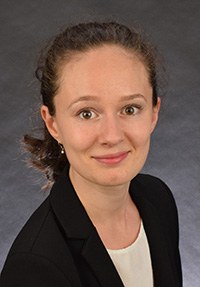Iulia Carabadjac
Abstract
Lipid membranes play various important roles in living organisms. Drugs and biologically active molecules typically need to cross membranes or may even act on the membrane itself. To eliminate pathogens, we can make use of active compounds to target their membranes. Synthetic model membranes can further be used as drug delivery systems for a wide range of medical substances.
In consequence of this great variety of membrane purposes, the characterization of membrane properties is a fundamental task of pharmaceutical research. Investigating the impact of amphiphilic molecules on the membrane fluidity, polarity and integrity can reveal important information about their modes of action.
While good tools are available to investigate interactions between membranes and amphiphilic molecules in general, there are still difficult tasks that cannot be addressed with conventional assays. The main goal of my work is to develop new assays for examining membrane properties with the aim to better understand specific interactions.
In particular, the project comprises three parts:
- Development and validation of novel leakage assays for small membrane pores and for low osmolality environments
- Investigation of the effect of overproduced proteins on bacterial membrane polarity and fluidity on a nanosecond scale
- Investigation of interactions between micelles as drug delivery systems with plasma components like proteins and cell membranes
Methods
Dynamic Light Scattering, Steady-State Spectroscopy, Time-Correlated Single Photon Counting (including Time-Resolved Anisotropy and Time-Resolved Spectral Shifts)




